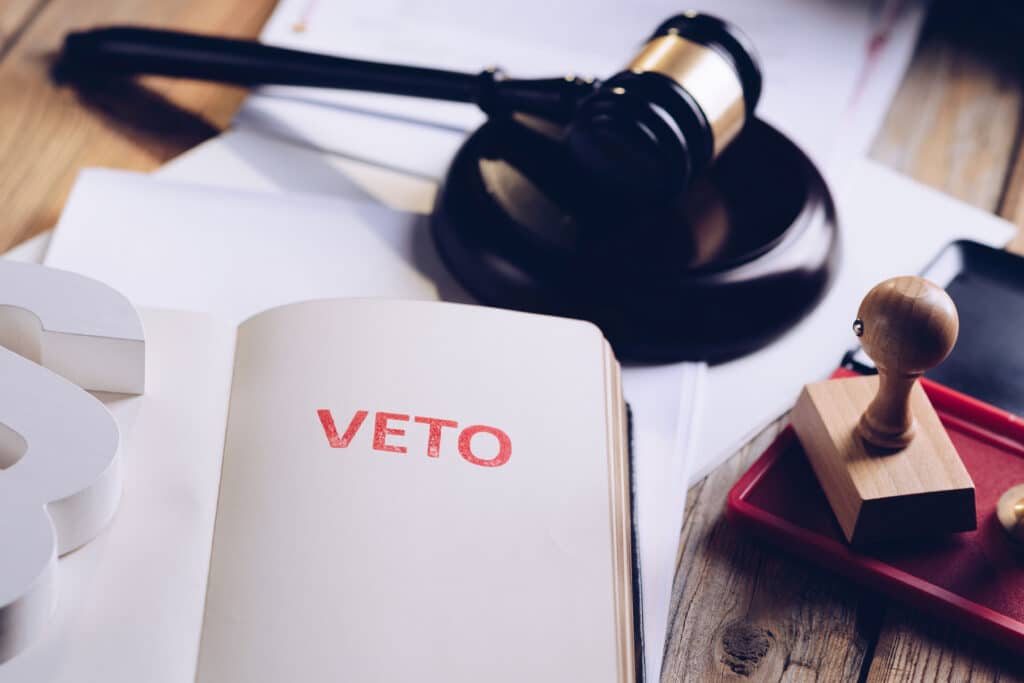In the cannabis world, its very much a fight of the people vs the government. The upcoming ballot in Ohio is a great example of how hard governments are working, to screw over their own.
Ohio ballot measure
Ohio is the only state that’s offering a recreational cannabis ballot measure this election season. And it was hard won to get it this far. In fact, it was supposed to be last year, but the government got in the way of it; even though the activist group in charge, did everything it was supposed to do. Both the fight to get it in the election, and recent attacks by the governor; shine a light on the ongoing battle between government and people, when it comes to weed legalization.
The activist organization, CTRMLA – Coalition to Regulate Marijuana Like Alcohol, handed in validated signatures in 2022, according to signature collection rules. What did the state do? Literally nothing. It just didn’t respond. The signature collection in general triggered a congressional review session on the matter. The government could have used this opportunity to introduce its own legislation, but it didn’t even do that.
CTRMLA tried to force the ballot measure into the 2022 election legally, through a case with the state. The case was settled in favor of CTRMLA, but not in time to get into the election for that year. As part of the settlement, the government could not ask the group to re-collect validated signatures. But it didn’t stop the state from telling the group it had not collected enough.
So CTRMLA went out and collected more. After handing in a large number, the state said the organization was still 679 short. The group collected 6,000 more, bringing the total to thousands over the necessary line. The government did not have an excuse to stop it this time, and the ballot was officially announced on August 16th.
Ohio governor attacks cannabis ballot measure
There’s already a lot of excitement for this ballot; and as per the usual, a lot of predictions. Some of this is based off things like surveys. A recent one, for example via pppoles, shows that 59% say they would vote yes on legal weed, vs 39% who would vote no. As this only accounts for 638 people; its not the best insight, but its also not nothing. According to Marijuana Moment, a poll through Northern Ohio University found that two out of three respondents support marijuana legalization (but were not asked about the poll).
Even so, this didn’t stop Governor Mike DeWine, from attacking the ballot, or trying to dissuade voters. DeWine even went as far as to say the voters of his state are confused between two different ballot questions; one on abortion, and one on cannabis. He told local NBC affiliate WLWT news, “These are gonna go right down to the wire. I think there’s still confusion about both of them, and I think that both of these will be close.”
Does he think people are confused about separate bills for abortion and cannabis rights? Is it that he thinks the public can’t decipher between the two measures? Or that the public is just generally unable to understand what they offer individually? He’s against legalization to begin with, so this rhetoric isn’t shocking; but it is silly and nonsensical. The guy holds to the worn and useless argument of cannabis danger, saying:
“I don’t think the little bit of money that this will generate to the state of Ohio is worth the damage to the people of Ohio.” Okay, so maybe it won’t be a massive moneymaker, but it’s not going to cause mass death either. We already know this too; and it should be criminal for any governor to allow the sale of opioids, and then talk about cannabis danger. Ohio has a growing issue with drug overdose deaths, so its odd that the governor would attempt to denigrate a ballot for a drug that doesn’t cause death, and which is often spoken about for helping addicts.
The guy is all over the place. First with fear of damage to people (not explained); and then with fear for businesses; which doesn’t make sense. Whereas DeWine didn’t think it was unfair for his government to not respond to signatures last year, he DOES think its unfair that already open dispensaries could get licenses faster, saying the law “favors certain people and says certain—people who already have a license to sell medical marijuana—it favors them over anybody else.” Maybe he’s confused about how medical facilities are already up to regulatory code, making it easier to start with them. Maybe that’s what it is.

The argument is reminiscent of an issue from a 2015 legalization ballot. If this ballot had passed, only a small number of producers would have controlled the industry. That issue kept it from a winning vote, but that was back in 2015. The current ballot is different, and doesn’t include this part. It sounds like DeWine wants to play on old fears; as a means to get people to go against something that’s gaining popularity. Just another government representative willing to fight his own people, to keep cannabis illegal.
Where else the government and people fight over cannabis reform
If this were the first time it ever happened, then maybe it would seem more okay – like a basic difference of opinion. But it’s not the first time we’ve seen a legislative government fight its own people, when it comes to cannabis. And no less, when it comes to ballot measures for legalization laws. One thing to remember, is that ballots are not written by governments, and are hard for legislators to modify. Governments generally prefer their own legislation.
Probably the biggest offense we’ve seen, belongs to South Dakota and Governor Kristi Noem. South Dakota voted in both legal and recreational cannabis in 2020; but the governor conspired with law enforcement to take the recreational legalization away. In the end, it was voided; and Noem worked just as hard to try to delay the onset of the medical legalization. Luckily, she was not victorious on the latter. It’s quite possible Noem is behind other efforts for a retraction on the medical front; as we know she is good at working through other people.
Oklahoma activist groups also faced problems with the government, which worked to delay a ballot measure for many months. Instead of holding it at election time, when people are more likely to show up; it was voted on in March of this year, subsequent to an order by Governor Kevin Stitt, for the ballot to be on that day. It got very little attention. The measure lost with 61.67% of the voting population saying no.
But why was it not held during the 2022 elections, when people expect to vote on these matters? It was ultimately blamed on the state’s own software system for ballot verification; which the state seemed to use this ballot measure as a test for. When it didn’t work well, it required hiring workers to physically go through the signature sheets that the system was meant to verify. This took way more time than a machine, and no extra workers were hired in order to get things done in time; even though this was a government mistake in the end.
This led to challenges in terms of signature collection. So basically, the government messed up by using what was an untested system. And then didn’t hire the required amount of physical workers to make up for this, when it became problematic. Which, then led to legal challenges, which put everything over the time limit. And as far as I can tell, the government didn’t take responsibility for anything. Kind of sounds like a backhanded move by the government, to keep the ballot from making it on in time for the election. Which, unfortunately, worked.

Hawaii is another example. Although its former governor did relent on some things in the end, Hawaii passed several cannabis measures over several years, nearly all of which were vetoed by previous governor David Ige; including an inter-island medical cannabis transportation bill, and a bill to start a program for licensing industrial hemp.
Perhaps in a showing of understanding that he could not hold this off forever, Ige did allow a decriminalization measure to pass in 2019, but made a big deal about not actually signing it; a move often used by political leaders who know they cannot stop something, but disagree with it nonetheless. It’s possible that a legalization bill which had been circulating that same year, was essentially left behind because of Ige’s disapproval, and overall likeliness to veto it if it did pass.
Conclusion
These are just a few examples of how governments can get in the way of legalization efforts, particularly voter ballots. They exemplify how cannabis legalization is most definitely a fight between the people, and government bodies. Hopefully, Ohio will have a happy ending, and push through to a legalization victory.
Welcome to the publication; we’re happy that you’re here. You arrived at Cannadelics.com; a site for independent reporting on the growing cannabis and hallucinogen spaces. We’re here everyday, so join us regularly for updates; and sign up for our Cannadelics Weekly Newsletter; for access to awesome product promotions, along with everything else.





